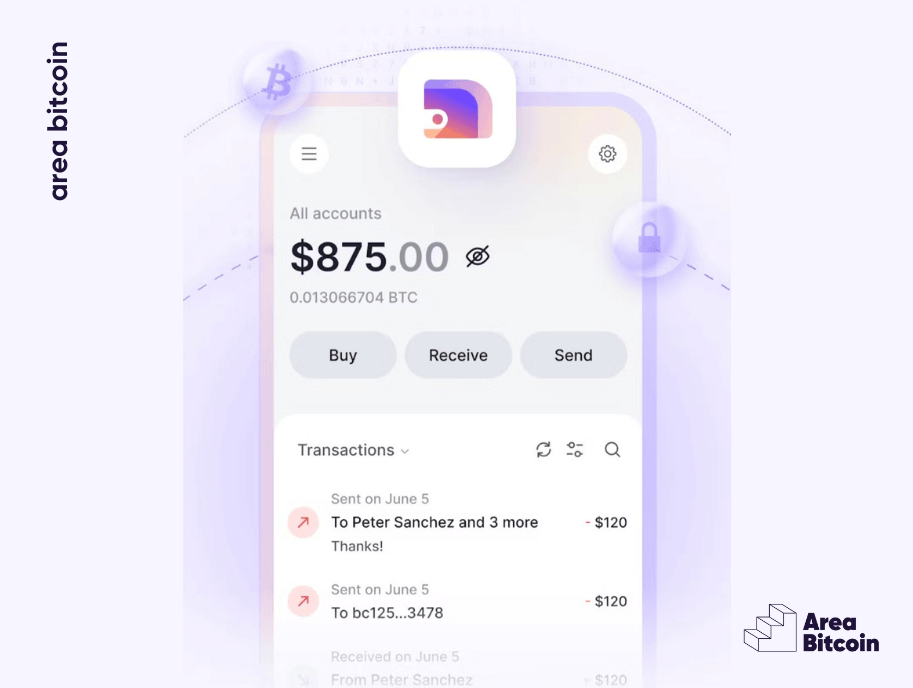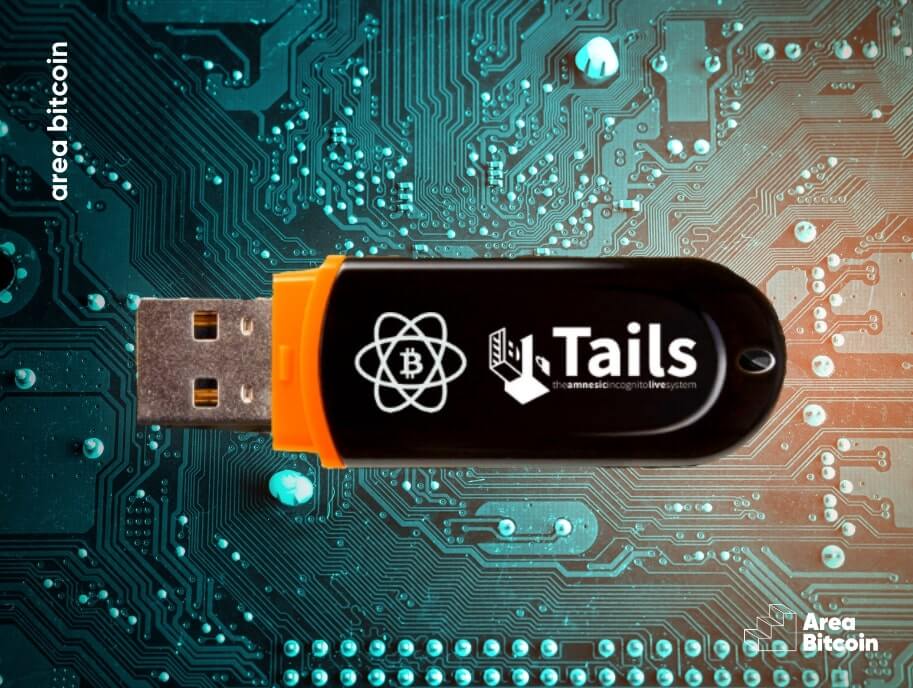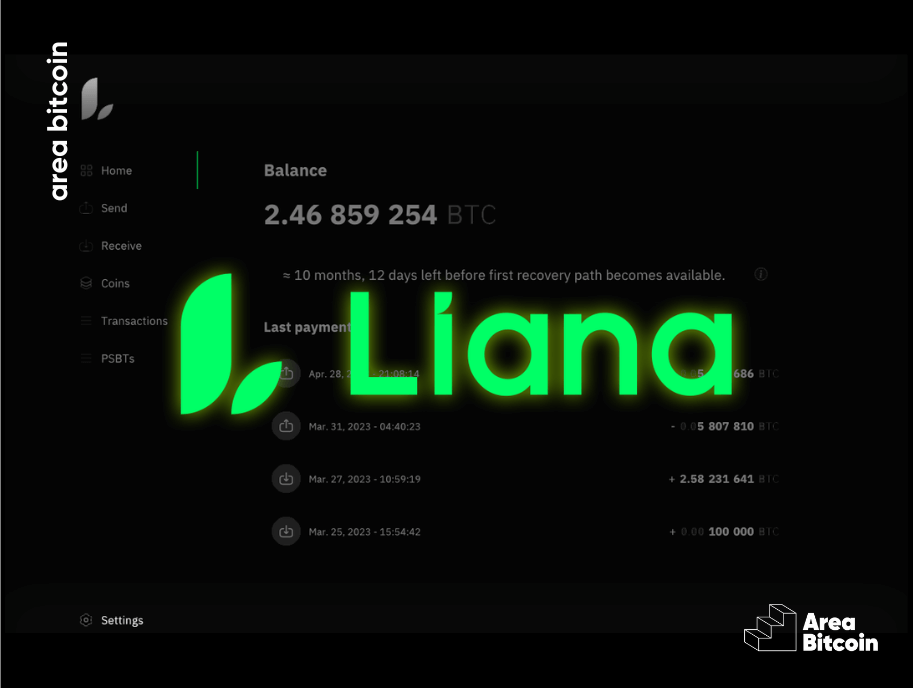In the realm of Bitcoin, security and autonomy reign supreme. Hardware wallets have emerged as shining beacons of security, providing an impenetrable fortress for safeguarding digital currencies while keeping them firmly under the user’s direct control.
Embark on a comprehensive journey with us as we delve into the intricacies of Coldcard, a hardware wallet meticulously designed with Bitcoin at its core. We’ll dissect its strengths, unravel its unique features, examine potential drawbacks, and assess its position in the competitive portfolio market.
A Hardware Wallet Designed for Bitcoin Security
The Coldcard MK4 is a hardware wallet specifically designed for safeguarding and storing Bitcoin. It provides a highly secure method for storing, sending, and receiving digital assets.
The Coldcard MK4’s primary focus is on security and privacy, making it a preferred choice for Bitcoin enthusiasts, cyberpunks, and developers.
The Coldcard Wallet typically operates offline, meaning it’s not constantly connected to the internet, reducing the risk of cyberattacks. Additionally, it incorporates advanced authentication features, such as PIN code entry and physical transaction confirmation on the device itself. This ensures that even if an attacker gains access to the device, they will still face significant hurdles in accessing the funds.
Consequently, this hardware wallet is known for its compatibility with the concept of “air gap” (network isolation). This means that the private keys associated with the funds are physically stored outside the reach of hackers or online malware.

Who is the manufacturer of the Coldcard?
The Coldcard is a product of Coinkite, a Canadian company that is also responsible for other notable products such as the OpenDime and the BlockClock.
Its co-founder and CEO is Rodolfo Novak, known on Twitter as NVK, a Brazilian born in São Paulo who chose to settle in Canada.
Before founding Coinkite, he also co-founded Ripe Apps, served as vice president of product at Method: CRM, and was director of products at Quandl.
Coinkite offers two versions of the Coldcard:
- Coldcard Q, released announced;
- Coldcard MK4, which is currently their main product.
With the MK4, Coinkite has raised the security standard, providing a safe and reliable experience for Bitcoin enthusiasts around the world.
Design and interface of the Coinkite Coldcard MK4
At first glance, the Coldcard may seem like a simple device, but behind its modest appearance hides a series of robust features.
The OLED display is clear and easy to read, while the physical buttons provide a satisfying tactile response. In addition, the fact that it resembles an old calculator can even be considered a discreet security feature.
Their classic model is transparent, as in the image above. However, in 2023, Coinkite released versions in different colors, such as orange, green, pink, red, and even a model that glows in the dark, called dark mode.
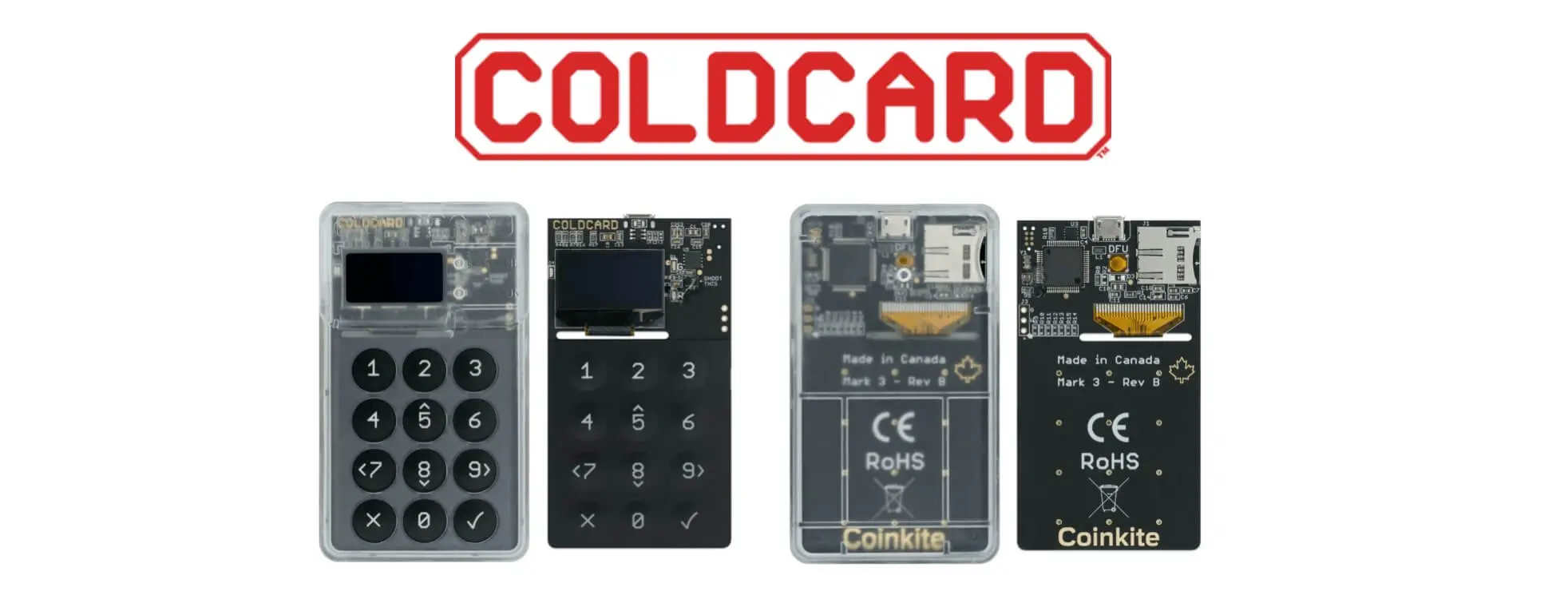
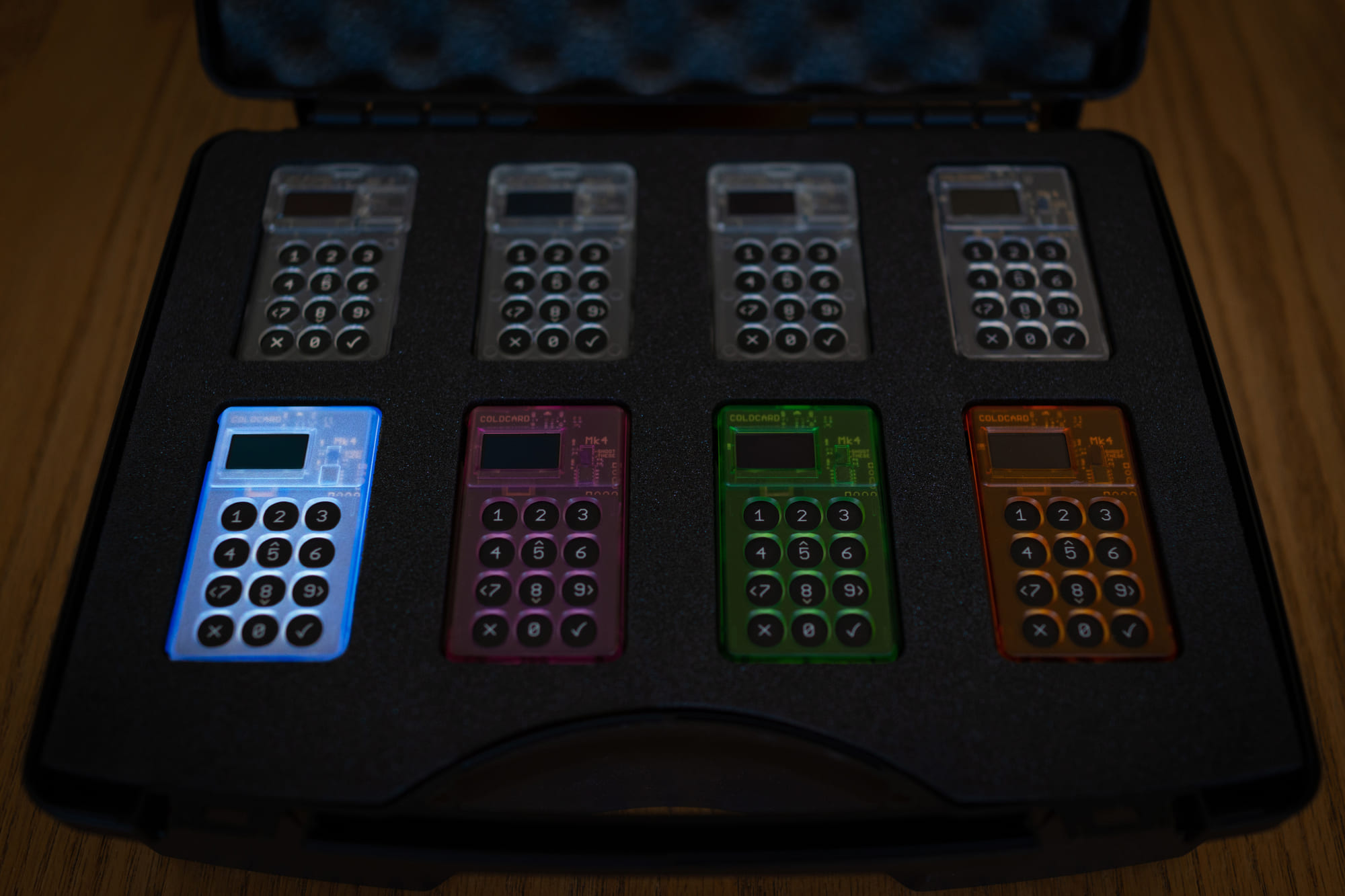
Security features
As we mentioned earlier, Coinkite has paid meticulous attention to every detail of security in its wallet. From the packaging to the design, through the chips and firmware, everything has been carefully designed to position this wallet as one of the safest available on the market.
The company has made considerable efforts to instill confidence in the integrity of the hardware even before you receive it. To achieve this goal, a layer of epoxy resin is applied over all internal components and then soldering is performed. This process creates a situation in which any attempt to tamper with or replace the internal elements would be readily apparent.
The MK4 is also delivered in a sealed plastic bag, with a unique number. In addition, this same number is permanently printed on the Coldcard board, easily visible thanks to the transparency of the protective cover.
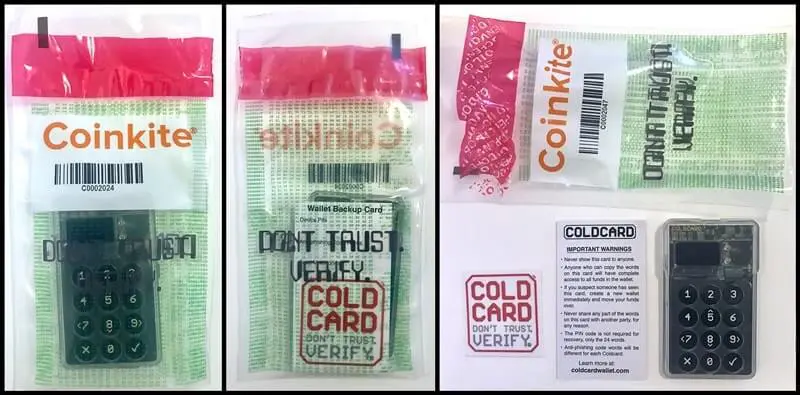
Therefore, if the numbers on the Coldcard and the packaging do not match, this signals the possibility of opening, tampering, or replacement. These additional practices underscore Coinkite’s firm commitment to ensuring the authenticity and security of the product.
Hardware features
Regarding hardware, this hardware wallet boasts several features that significantly enhance its security:
- Always offline: The Coldcard offers a true “cold storage” experience, allowing users to keep their keys completely offline.
- Open-source: The transparency of the open-source firmware allows for a higher level of trust and community review.
- Anti-fraud PIN mechanism: In case of coercion, a secondary PIN can be entered to show a fake wallet, providing an interesting psychological defense.
- Air-gapped signature: The capability to sign transactions without needing a direct computer connection elevates the security standards. This feature is crucial in reducing cyber risks associated with transactions.
What chips are used in the Coldcard?
The Coldcard uses two secure elements, which are compact and powerful.
ATECC608
The first of these chips is the ATECC608, a fixed-function device designed to store private keys.
Unlike some other secure elements, it’s not a general-purpose CPU. This means that neither Coinkite nor the chip manufacturer can alter the chip’s operation without physically modifying its structure. Hence, all accesses and updates are strictly predefined by its hardware and design.
The seed phrase, or ‘recovery phrase’, is securely stored on this chip. Users have the option to either jot down the 12 or 24 words or keep them stored on an SDCARD.
Maxim DS28C36B
Introduced with the Coinkite Coldcard MK4, this second secure element, the Maxim DS28C36B, was added as an additional security measure. It ensures that in the event of a critical security failure by one supplier, the overall security of your key words remains uncompromised.
Communication with these chips involves intricate challenge-response protocols using SHA-256, effectively preventing repetition, data leakage, and spying attempts.
Moreover, the Coldcard Coinkite features a unique light control system for additional security. For instance, if the green light turns red, it signals a potential espionage attempt or an ongoing attack on your wallet. This color shift is a direct indicator of a potential breach in progress, enhancing the user’s awareness and wallet’s security.
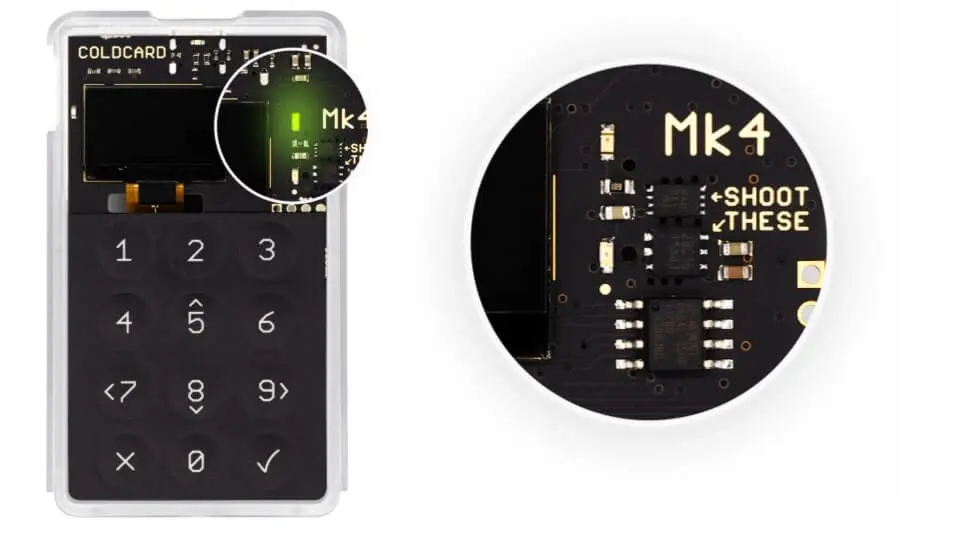
Compatibility and integration with other wallets
The Coldcard, while a standalone and sturdy wallet in its own right, also boasts compatibility with popular software wallets like Electrum and Wasabi. This compatibility allows users the flexibility to connect the Coldcard to these programs, broadening their options for managing and accessing their Bitcoin holdings.
This feature is particularly beneficial for those already familiar with these software wallets or those seeking to utilize specific features they offer. It provides users with the liberty to choose their preferred method of accessing and managing their funds.
However, the main advantage of this compatibility is that users can take advantage of the advanced features and convenience of the software without compromising the security provided by the Coldcard MK4.
In other words, they have the freedom to choose the way of interaction that best aligns with their needs and preferences, while maintaining a high level of security when using the Coldcard as their hardware wallet.
Setting up and using your Coldcard MK4 in 5 steps
- Verify the Unique Number: When you receive your Coldcard MK4, it comes sealed in a special package, displaying a unique number. This same number appears on the device’s screen upon turning it on. It is stored in a One-Time Programmable (OTP) memory, which is write-once and cannot be erased or reprogrammed. This memory safeguards crucial data.
- Initial Check: Before activating the device, compare the number on the packaging with the one displayed on the device. Upon powering up, the Coldcard MK4 conducts an internal check. If there’s any discrepancy or issue, a red light will alert you.
- Set a PIN: Secure your device with a PIN, split into two parts, each followed by a security word. Remember this PIN, as incorrect entries (three or more times) trigger a warning and edge the device closer to being locked. You have a total of 13 attempts before the wallet locks permanently, making recovery impossible.
- Generate Keys: This hardware wallet uses three random number generators to create a private key. You have the option to add additional data for key generation. By default, it generates a 24-word sequence. These words are vital; if you lose, damage, or have your Coldcard stolen, they can be used in another wallet to recover your coins.
- Using Your Coldcard: To access your Coldcard, enter your PIN. The internal chips will validate it and grant access to your private key, enabling you to sign transactions. The device’s design ensures that your private key is securely
What are the Coldcard MK4’s differentiators?
The wallet distinguishes itself through both its strong security measures and its dedication to transparency and the open-source philosophy. Moreover, it provides numerous unique features compared to other brands.
Now, let’s delve into each of these distinctive aspects:
Air Gapped
The Coldcard MK4 stands as the sole hardware wallet capable of functioning entirely offline. This means that your private keys remain shielded from internet exposure, greatly enhancing security.
Utilizing the PSBT (Partial Signed Bitcoin Transaction from BIP174) format, the Coldcard MK4 facilitates offline signing. This empowers you to generate your seed phrase, create transactions, and sign them all without the necessity of connecting to a computer.
Additionally, the Coldcard MK4 offers USB-C support, allowing connection to a computer when needed. However, it’s not mandatory to connect it to a computer if you prefer not to.
NFC Support
The Coldcard MK4 supports NFC, which allows you to securely transfer data to your phone without connecting to a computer. This is a convenient way to access your funds and make transactions.
Micro-SD support
The Coldcard MK4 offers support for Micro-SD cards, providing a secure method to store a backup of your seed phrase. This precautionary measure ensures the safety of your funds in the event of Coldcard loss or theft.
Furthermore, the Micro-SD card can be utilized for signing Bitcoin transactions without requiring an internet connection. This feature guarantees the security of transactions even when offline.
The Coldcard MK4’s primary design focus is on offline usage, making it one of the most secure hardware wallets on the market.
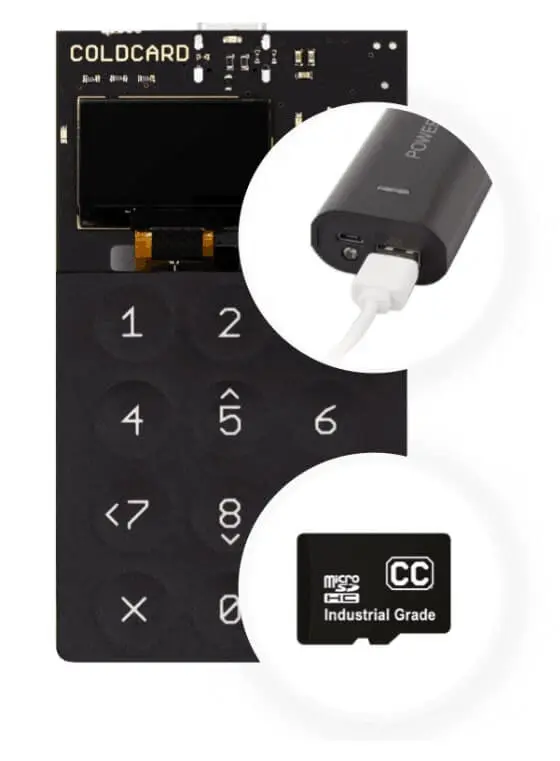
How does the Coldcard MK4 facilitate destruction work?
The Coldcard MK4 facilitates the destruction of sensitive data or seed phrases by offering a wipe function that permanently erases stored information from the device’s memory.
To destroy your Coldcard MK4, follow these steps:
- Locate the secure element on the back of the device. It is a small, rectangular chip with the inscription “shoot these” located on it.
- Use a sharp object, such as a drill or a nail, to pierce the secure element at the points indicated by the arrow.
- Once the secure element has been pierced, the device is no longer functional and any sensitive information stored on it is irretrievable.
This destruction process is designed to ensure that your Coldcard MK4 cannot be used to access your funds or steal your private keys.
It is important to follow these instructions carefully to ensure the complete security of your information.
How does two-word protection work?
Every time you open your Coldcard, two words will be displayed. It is crucial to check these words, as they serve as proof that the Coldcard is authentic and has not been tampered with. This security measure is called the “anti-phishing phrase”.
The anti-phishing functionality works as follows: the PIN required to access the wallet is composed of 8 digits, separated into two parts, such as 1234-5678.
When you enter the first half of your PIN (1234), two unique words are displayed on the screen. Each Coldcard has distinct words, with no repetition in other Coldcards.
Consequently, by verifying that the displayed words are actually those associated with your wallet, you can proceed by entering the second half of the PIN (5678) and using the wallet as needed. This process prevents the possibility of your Coldcard being replaced by another, preventing a type of attack known as the “Trojan horse”.
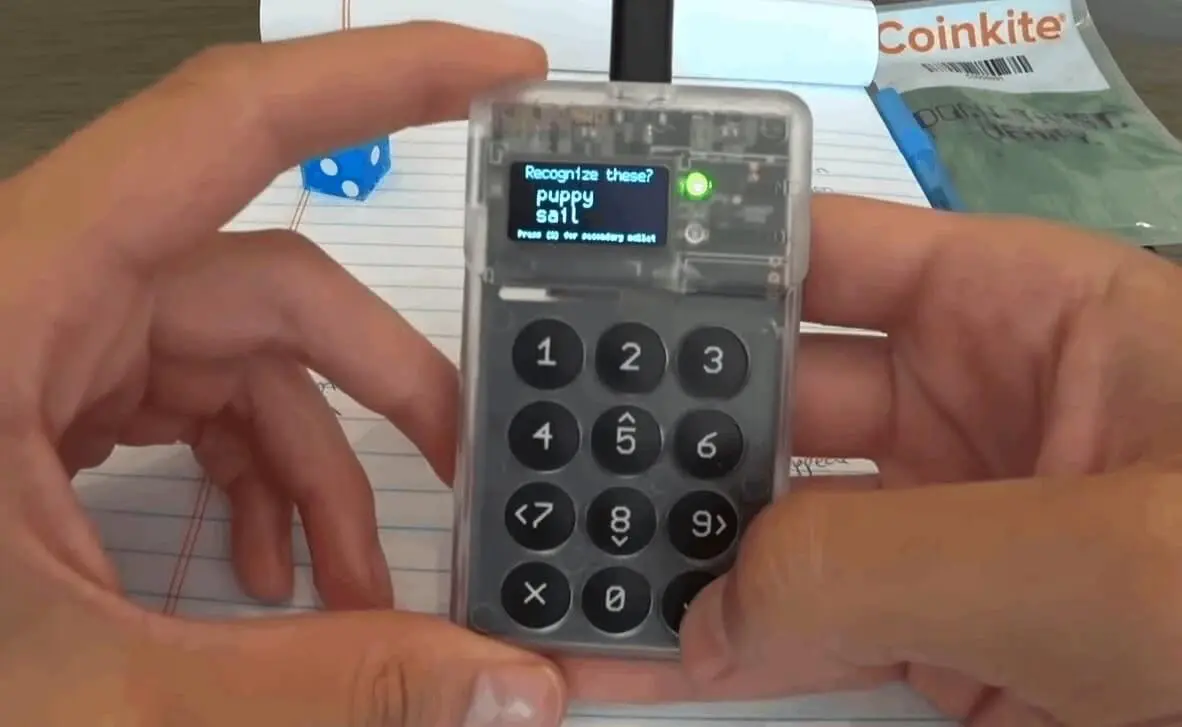
What is the “Duress PIN” feature?
It is a feature that allows the user to create a fake wallet. In such a situation, if someone enters the false security PIN instead of the real PIN, the wallet will work normally but will display the balance associated with another wallet that is not the main one.
Consequently, in the event of a physical invasion, the attackers will only have access to the Bitcoins that you have chosen to keep in this fake wallet and that you are willing to lose. The protection offered by this feature is useful for limiting damage in the event of theft.
Brick Me PIN
In addition, the Coldcard also offers the option to create a Brick Me PIN, or a self-destruct PIN. If you or someone else enters this PIN, the wallet will become completely inoperable and will no longer be able to make transactions.
This feature was developed to deal with situations of physical attacks, known as “5 dollar wrench attacks”, in which an individual discovers that you have a significant amount of bitcoins and resorts to threats or physical aggression to gain access to your private keys.
The ability to activate the Brick Me PIN serves as an additional security measure, allowing you to disable the wallet immediately if you feel threatened or under duress, thus protecting your digital assets.
Advantages and disadvantages of the MK4
After understanding the history of this hardware wallet, its features, and the level of security it offers, it is time to explore the advantages and disadvantages of owning this cold wallet.
Advantages
- Secure storage: The Coldcard uses specialized chips to store your private keys. These chips are designed to be very secure and resistant to attack.
- Internet isolation: The Coldcard never requires a connection to a computer. This means that your private keys are never exposed to the internet, making them much more secure.
- OLED display: The Coldcard’s OLED display (128 x 64 pixels) is very clear and easy to read. This makes it easy to view important information about your transactions.
- USB connectivity: The Coldcard’s USB port makes it easy to connect to a variety of devices. This gives you the flexibility to use the wallet with your computer, phone, or other devices..
Disadvantages
- Technical complexity: Being a more advanced wallet, it can be more technical and less intuitive for beginners.
- Limited support: Support is more DIY-oriented, generally available through developers willing to help on Twitter, which can be a challenge to obtain.
- Lack of factory reset: It is not possible to reset to factory defaults, which can be a limitation in certain situations.
Where to buy a Coldcard?
The best place to buy a Coldcard is directly from the manufacturer’s website, Coinkite. This will ensure that you are getting an authentic product and that you are eligible for the company’s warranty and support.
When you purchase a Coldcard from Coinkite, you will receive the following items:
- A Coldcard MK4 hardware wallet
- A USB-C cable
- A MicroSD card
- A quick start guide
You will also need to create a Coinkite account and download the Coinkite software in order to use your Coldcard.
Here are some of the benefits of buying a Coldcard from Coinkite:
- You will be guaranteed to get an authentic product.
- You will be eligible for the company’s warranty and support.
- You will receive free shipping on orders over $100.
Here are some other places where you can buy a Coldcard:
However, we recommend buying directly from Coinkite to ensure that you are getting an authentic product and that you are eligible for the company’s warranty and support.
Coldcard vs. OpenDime: Which Hardware Wallet is Right for You?
Coldcard
The Coldcard is a more advanced hardware wallet that offers a number of security features, including:
- Air-gapped: The Coldcard never needs to be connected to a computer, making it immune to malware and other online threats.
- PSBT support: The Coldcard supports PSBT (Partial Signed Bitcoin Transaction), which allows you to sign transactions offline and then broadcast them to the network using a trusted computer.
- Secure element: The Coldcard uses a secure element, which is a specialized chip that is designed to protect your private keys.
- Self-destruct pin: The Coldcard has a self-destruct pin that can be used to wipe the device’s memory if it is lost or stolen.
OpenDime
The OpenDime is a simpler and more affordable hardware wallet that is designed for storing small amounts of Bitcoin. It is a small, USB-shaped device that can be easily carried around with you.
To use the OpenDime, you simply connect it to a computer and enter the amount of Bitcoin you want to send.
The OpenDime will then generate a transaction and display a QR code. You can scan the QR code with your smartphone to send the Bitcoin.
Which Wallet is Right for You?
The best hardware wallet for you depends on your individual needs.
If you are looking for the most secure hardware wallet possible, then the Coldcard is the better choice. However, if you are looking for a simple and affordable hardware wallet for storing small amounts of Bitcoin, then the OpenDime is a good option.
Here is a table that summarizes the key differences between the Coldcard and OpenDime:
| Feature | Coldcard | OpenDime |
| Air-gapped | Yes | No |
| PSBT support | Yes | No |
| Secure Element | Yes | No |
| Self-destruct pin | Yes | No |
| Price | $200 | $20 |
Conclusion
The Coinkite Coldcard is a wallet designed for intermediate and advanced users, as it requires a higher level of familiarity with Bitcoin technology before it can be used.
Therefore, it is aimed at those Bitcoiners who are interested in exploring devices in detail and who prioritize security and privacy over convenience and practicality.
One thing is for sure, acquiring a Coldcard MK4 as your secure Bitcoin wallet is a decision that is worth it.
Don’t forget to share this post with friends and see you next time!
Share on your social networks:

Founder of Area Bitcoin, one of the largest Bitcoin education projects in the world, she is a marketer, passionate about technology, and a full-time hands-on professional. She has participated in major Bitcoin conferences such as Adopting Bitcoin, Satsconf, Surfin Bitcoin, and Bitcoin Conference.
Did you like this article? Consider buying us a cup of coffee so that we can keep writing new content! ☕




